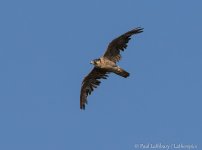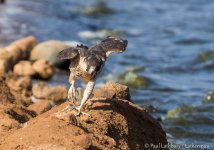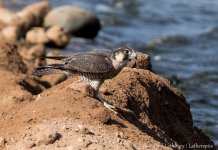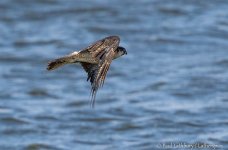Seen at Aqaba, Jordan in October, I'm struggling to pin this down as it appears to show charactistics of Peregrine Falcon (f. peregrinus, especially f.p.brookei), and Barbary Falcon (f. (peregrinus) pelegrinoides). Of couse a hybrid is also on the cards.
Any thoughts please folks?
Feint pinky/buff on sides of face, narrow border of dark band between cheek and eye. small buffy patch on forehead over bil.
Any thoughts please folks?
Feint pinky/buff on sides of face, narrow border of dark band between cheek and eye. small buffy patch on forehead over bil.
Attachments
Last edited:









